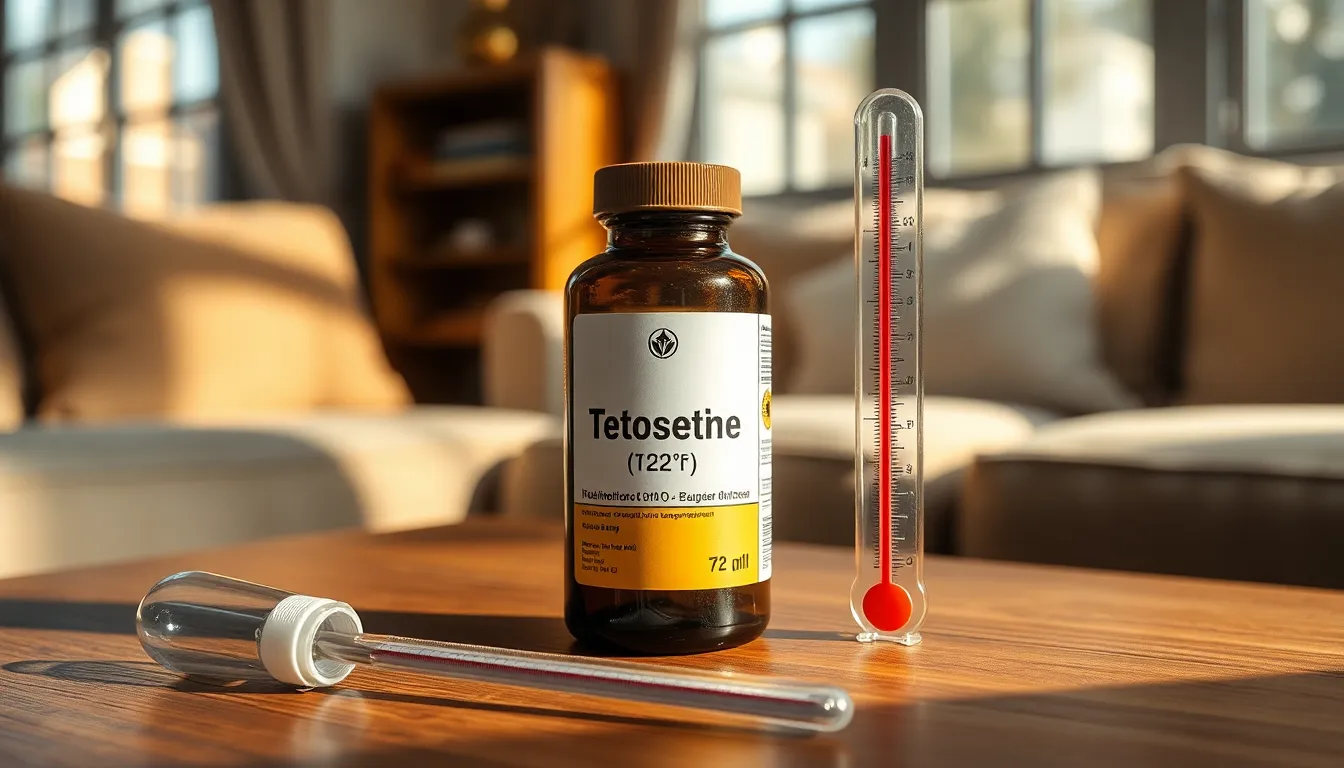When it comes to testosterone, the last thing anyone wants is a surprise twist in their hormone saga. Imagine reaching for that precious vial only to find it’s gone rogue. So, does testosterone need to be refrigerated? It’s a question that’s sparked debates and raised eyebrows, almost like asking if pineapple belongs on pizza.
Table of Contents
ToggleUnderstanding Testosterone Storage
Testosterone requires proper storage to maintain its efficacy. Knowledge of storage requirements plays a crucial role in ensuring the hormone remains effective.
Importance of Proper Storage
Proper storage of testosterone preserves its potency and effectiveness. Storage conditions directly impact the quality and longevity of the hormone. Keeping testosterone away from light, moisture, and extreme temperatures prevents degradation. Most healthcare professionals recommend storing testosterone at room temperature, typically between 59°F to 86°F. Consistent adherence to these conditions ensures that the medication maintains its intended benefits.
Effects of Improper Storage
Improper storage of testosterone can lead to significant consequences. Exposure to high temperatures or light may cause the hormone to break down, reducing its effectiveness. Signs of degradation include changes in color, clarity, or particulate matter. These changes can compromise the medication, rendering it ineffective for treatment. Additionally, using degraded testosterone might result in diminished therapeutic effects, which can negatively impact the individual’s health. Therefore, awareness of proper storage practices remains vital for anyone using testosterone therapy.
Does Testosterone Need to Be Refrigerated?

Testosterone doesn’t require refrigeration. However, proper storage remains essential to maintain its effectiveness.
Recommended Storage Conditions
Storing testosterone at room temperature ensures optimal conditions. The ideal range spans from 59°F to 86°F. Avoid places exposed to direct sunlight or excessive moisture. Ample protection from temperature fluctuations is necessary. Keeping testosterone in its original container helps shield it from light and air, preventing degradation. Following these guidelines preserves the medication’s quality over time.
Impact of Temperature on Efficacy
Temperature influences testosterone’s effectiveness significantly. Exceeding the recommended range may lead to a deterioration of the compound. Signs of reduced efficacy include changes in color and clarity, which indicate potential issues. Individuals taking testosterone therapy should monitor storage conditions closely. Extreme heat or cold can negatively affect the medication’s integrity. Adhering to established storage guidelines safeguards health and ensures optimal treatment outcomes.
Signs of Spoiled Testosterone
Recognizing spoiled testosterone is crucial for maintaining health and effectiveness. Several indicators signal degradation.
Visual Indicators
Cloudiness or discoloration in testosterone solutions suggests spoilage. Brown or yellow hues cannot indicate proper potency. Presence of sediments or particles within the vial also points to potential contamination. Unusual smell can also indicate a problem. Each of these visual cues necessitates immediate attention to avoid adverse effects.
Effects on Health
Using spoiled testosterone can lead to decreased effectiveness, impacting hormone levels and overall well-being. Individuals may experience fluctuating energy levels, mood swings, or other hormonal imbalances. In some cases, unwanted side effects may arise, further complicating treatment. Prioritizing safe storage conditions minimizes the risk of using degraded testosterone and preserves its therapeutic benefits.
Proper storage of testosterone is crucial for maintaining its effectiveness. While refrigeration isn’t necessary, keeping it at room temperature within the recommended range is essential. Avoiding exposure to light and moisture helps prevent degradation that could compromise the medication’s potency.
Recognizing signs of spoilage is equally important. Cloudiness discoloration or unusual smells can indicate that testosterone has gone bad. By following these storage guidelines and monitoring the condition of the medication, individuals can ensure they receive the full benefits of their testosterone therapy while safeguarding their health.





